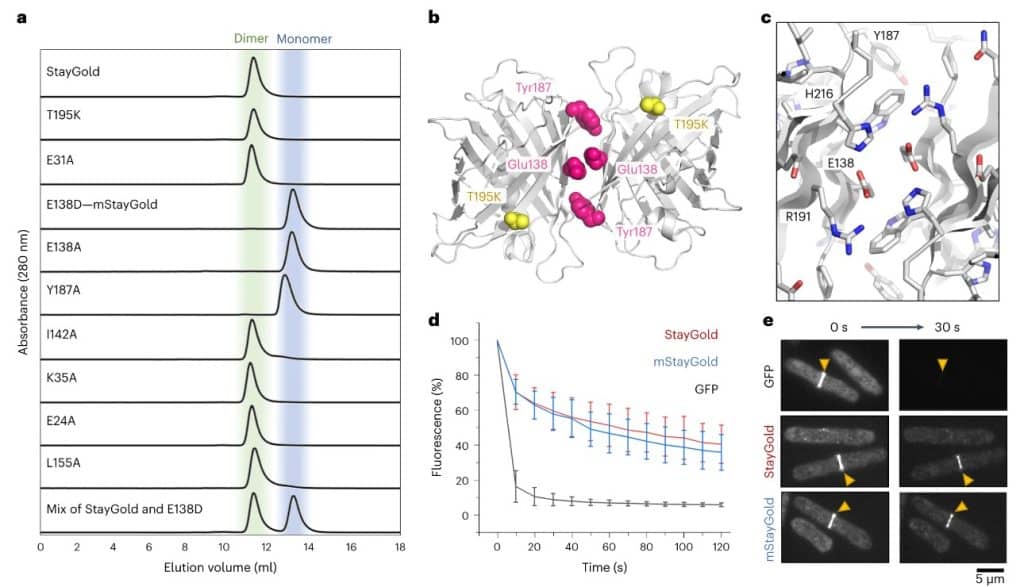StayGold variants explained!
Posted by Christophe Leterrier, on 19 December 2023
I figured it might be useful as a reference, so here’s a blog-ified version of a thread I posted on X about recently published monomeric variants of the StayGold fluorescent protein. Thanks to Helen Zenner of FocalPlane for the help!
In 2022, the Katayama/Miyawaki labs published StayGold, a bright and stable fluorescent protein (FP) from jellyfish Cytaeis uchidae: https://www.nature.com/articles/s41587-022-01278-2
The issue was that StayGold is dimeric and not easy to use as a fusion protein. Here’s a link to a couple of plasmids from this article available at Addgene and more plasmids from the Japanese NBRP (not sure how available they are).
A preprint also recently assessed the photostability of StayGold using point-scanning confocal microscopy, spinning disk or widefield illumination: https://www.biorxiv.org/content/10.1101/2023.11.23.568490v1
In 2023, 3 articles reported monomeric variants of StayGold with a confusing mStayGold naming.
1) The Miyawaki lab first preprinted a variant with multiple point mutations: https://www.researchsquare.com/article/rs-2941917/v1, which was published a couple of days ago (30 November 2023) https://www.nature.com/articles/s41592-023-02085-6.
Visualizing the inner mitochondrial membrane dynamics by sustainable, cell-wide volumetric SIM imaging. Figure extracted from Ando, et al. 2023 and made available under a Creative Commons Attribution 4.0 International License.
This mutant is called mSG1 or QC2-6 FIQ in the article. FPbase entry is here. No plasmids are available on Addgene yet. There is also another mutant described in the article with a different linker, mSG2 or QC2-6(PT) with no obvious advantage over mSG1.
2) The second preprint describing a monomeric StayGold is from the Mishima/Crow/Balasubramanian labs https://www.researchsquare.com/article/rs-2684100/v1 and was published yesterday (11 December 2023): https://www.nature.com/articles/s41587-023-02018-w

This is a single E138D mutation of the dimeric StayGold, hence the mStayGold E138D naming. The FPbase page is here. No Addgene plasmid available yet, as far as I can see.
3) This summer, the Piatkevich/Subach labs preprinted a third variant they called… mStayGold, which has 8 mutations from StayGold and optimized N- and C-termini: https://www.researchsquare.com/article/rs-3188559/v1
They compared its photostability to the second variant (called StayGold E138D in their preprint). Their variant has been renamed mBaoJin on FPbase. Plasmids for mBaoJin are available free of charge from WeKwikGene.
Hope this is useful for everyone interested in these new FPs, and that I didn’t made a mistake in this confusing but exciting blooming of mStayGold variants.


 (7 votes, average: 1.00 out of 1)
(7 votes, average: 1.00 out of 1)